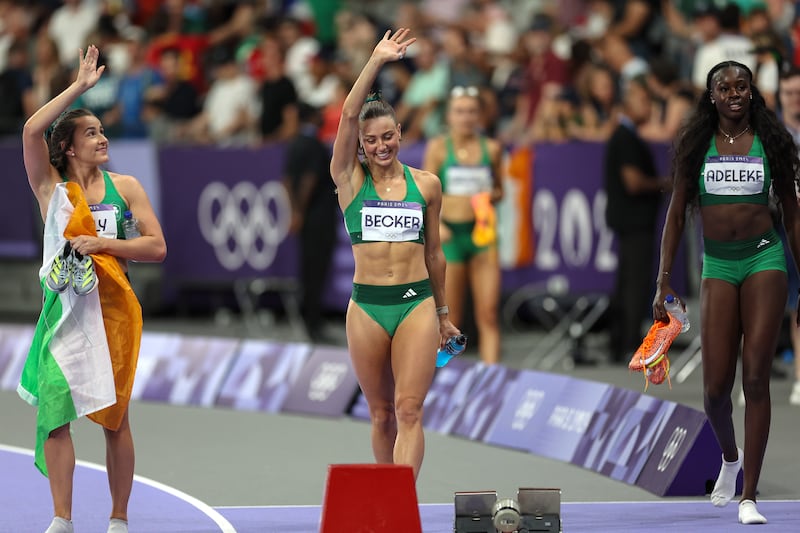The poster outside the clubhouse celebrating their four Olympians is just one telltale sign of the boom times for Raheny Shamrock, among the most prolific athletics clubs in Dublin. But behind the scenes they are struggling to meet the demand for new membership.
It’s become particularly pressing at juvenile level, with significant waiting lists now being experienced due to a lack of suitable coaches. Despite the recent purchase of a new permanent home at St Assam’s Church in the heart of the northside village there is no immediate room for much expansion either.
Three club members flew the Raheny flag in Paris last month, Sophie Becker in the 400m and relays, Brain Fay in the 5,000m, and Eric Favors in the shot, before Orla Comerford took to the Paralympics this week and blazed her way to a bronze medal in the T13 100m.
For Dave Hooper, lifelong Raheny member and currently on the club committee, that sense of local success is being fed by the national success of the sport of late, which in turn has placed unprecedented demands on the club.
In another staggered season, rugby’s URC has lurched along - all the while breaking attendance records
Slip in viewing figures suggests reducing Grand National risk has also reduced its appeal as a spectacle
Kerry GAA legend Mick O’Dwyer: a life in pictures
Dave Hannigan: NFL clubs ponder a big gamble on Desmond ‘Dez’ Watson
“We currently have just over 800 paid-up members, the highest we’ve ever been,” he says. “Of those 500 would be adult members, and around 300 are juveniles, and the two things causing the issue here with juveniles are the athlete to coach ratio and the safeguarding requirements, in that there’s just not enough volunteer coaches about to meet those needs.
“Anyone that comes in as a juvenile coach, the first place they’ll be sent is the Garda safeguarding, before the coaching badges come into it. Then for the juveniles, there is a rule, which is 10 athletes to one coach. That’s an Athletics Ireland rule. That’s what causes the challenge up to under-12, under-13, where the waiting list is up to around 30. It does thin out after that.

“It’s gone as high as 60 in the past, and we’ve done a lot to alleviate that, but if that waiting list is at 30 now, it’s probably going to be at 30 for the rest of the year, that’s the reality of it. Because there’s also a lack of athletics clubs, in general, in Dublin. That’s part of the issue too.”
The 10 athletes/players to one coach at juvenile level is similar in team sports such as GAA and soccer: “Most clubs, if a parent is able to coach, Athletics Ireland run an introductory coaching course, and if they have that, 95 per cent of clubs will accept it,” says Hooper.
“And if the parents have a coaching badge, can get involved, their children can get in immediately. We also had a summer camp the week before the Olympics, that was a great success, and with all that added interest and buzz now, it’s not nice when you’re telling kids in the area ‘sorry, we’re full’.”
Founded in 1958, the club has been based in an old schoolhouse in the village since 1969, and the new clubhouse at St Assam’s Church, that purchase completed in July, will afford the club the chance to upgrade in some respects.
“We’ve been chasing a place like that for the last 20 or 30 years,” says Hooper, “and it was only made possible by heavy fundraising over a 30-year period by club members.
“The exact plans for that will be released later this month, but will include a high-performance gym, but the other big challenge we have is around facility use, in that we use the Morton Stadium in Santry. We share that with DCU and Clonliffe, that limits us again to what we can provide.
“We do have plans for our own track, somewhere down the line, in this part of north Dublin. Santry is still three to four miles away from our base, and for juveniles especially you’d like to be a lot closer. That would be the biggest thing for us.”
















